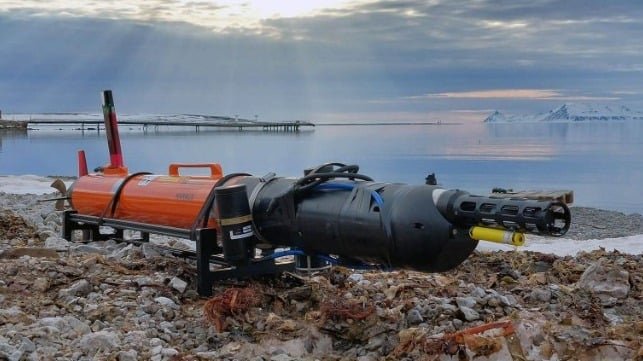The robots worked well, the algorithms provided valuable data, and the researchers have a better understanding of the dynamics of the spring bloom in the Arctic Ocean. But there is still much more to learn, and this is just the beginning,” says Mo-Bjørkelund.
As the water sampler descends into the depths of Kongsfjorden, Majaneva eagerly awaits the samples that will reveal the diversity of plankton species present in the water. Each sample holds a piece of the puzzle that will help piece together the intricate web of life in the Arctic Ocean.
With the data collected from the robots and the water sampler, the researchers will be able to create a more comprehensive picture of the phytoplankton bloom and its impact on the marine ecosystem. This information is crucial for understanding how climate change is affecting the delicate balance of life in the Arctic Ocean.
As the research expedition comes to an end, the researchers are filled with a sense of accomplishment. They have braved the cold waters of the Arctic, battled technical challenges, and worked tirelessly to unravel the mysteries of the spring bloom.
As they sail back to shore, they know that their work is far from over. There are still more questions to be answered, more data to be collected, and more discoveries to be made in the ever-changing Arctic Ocean.
But for now, they can take a moment to bask in the glow of a successful expedition, knowing that they have made a valuable contribution to our understanding of the complex and fragile ecosystem of the Arctic Ocean.
Revolutionizing Environmental Research with Autonomous Underwater Robots
As technology continues to advance, the field of environmental research is undergoing a transformation. In Trondheim, Norway, a group of innovative scientists and engineers are harnessing the power of autonomous underwater robots to revolutionize the way we study marine ecosystems.
Meeting the Experts
At NTNU University Museum’s laboratory, Sanna Majaneva is at the forefront of this groundbreaking research. Using genetic methods and environmental DNA, Majaneva is able to identify phytoplankton, zooplankton, and fish in water samples from Kongsfjorden. However, she acknowledges that there are still limitations to current technology.
“Identifying organisms through DNA is effective, but there are many species not yet included in reference libraries,” Majaneva explains. “We need to continue developing these methods to fully understand the biodiversity present in our oceans.”
The Role of Autonomous Robots
Meanwhile, former NTNU student Mo-Bjørkelund has founded an underwater technology company focused on autonomous underwater robots. These robots have the potential to revolutionize environmental monitoring and biological research by collecting data in a cost-effective and efficient manner.
“These robots will enable us to investigate multiple locations and depths, providing valuable insights into the dynamics of marine ecosystems,” Majaneva notes. “By utilizing autonomous robots, we can make informed decisions about where to take samples and optimize our research efforts.”
The Future of Marine Research
Projects like the Nansen Legacy have paved the way for interdisciplinary collaboration between biologists, engineers, and marine scientists. Professor Martin Ludvigsen emphasizes the importance of adaptive mapping using autonomous underwater vehicles to enhance our understanding of ocean processes.
“By combining sonar technology and statistical methods, we can calculate the concentration of zooplankton and track biological and chemical processes in real-time,” Ludvigsen explains. “This innovative approach will provide valuable data for future research endeavors.”
As we look towards the future of marine research, it is clear that autonomous underwater robots will play a crucial role in expanding our knowledge of the world’s oceans. Through collaboration and innovation, scientists and engineers are paving the way for a new era of environmental exploration.
This article appears courtesy of Gemini.no and may be found in its original form here.
Reference: Mo-Bjørkelund, Sanna Majaneva, Glaucia Moreira Fragoso, Geir Johnsen, Martin Ludvigsen: Multi-vehicle adaptive 3D mapping for targeted ocean sampling | PLOS ONE

